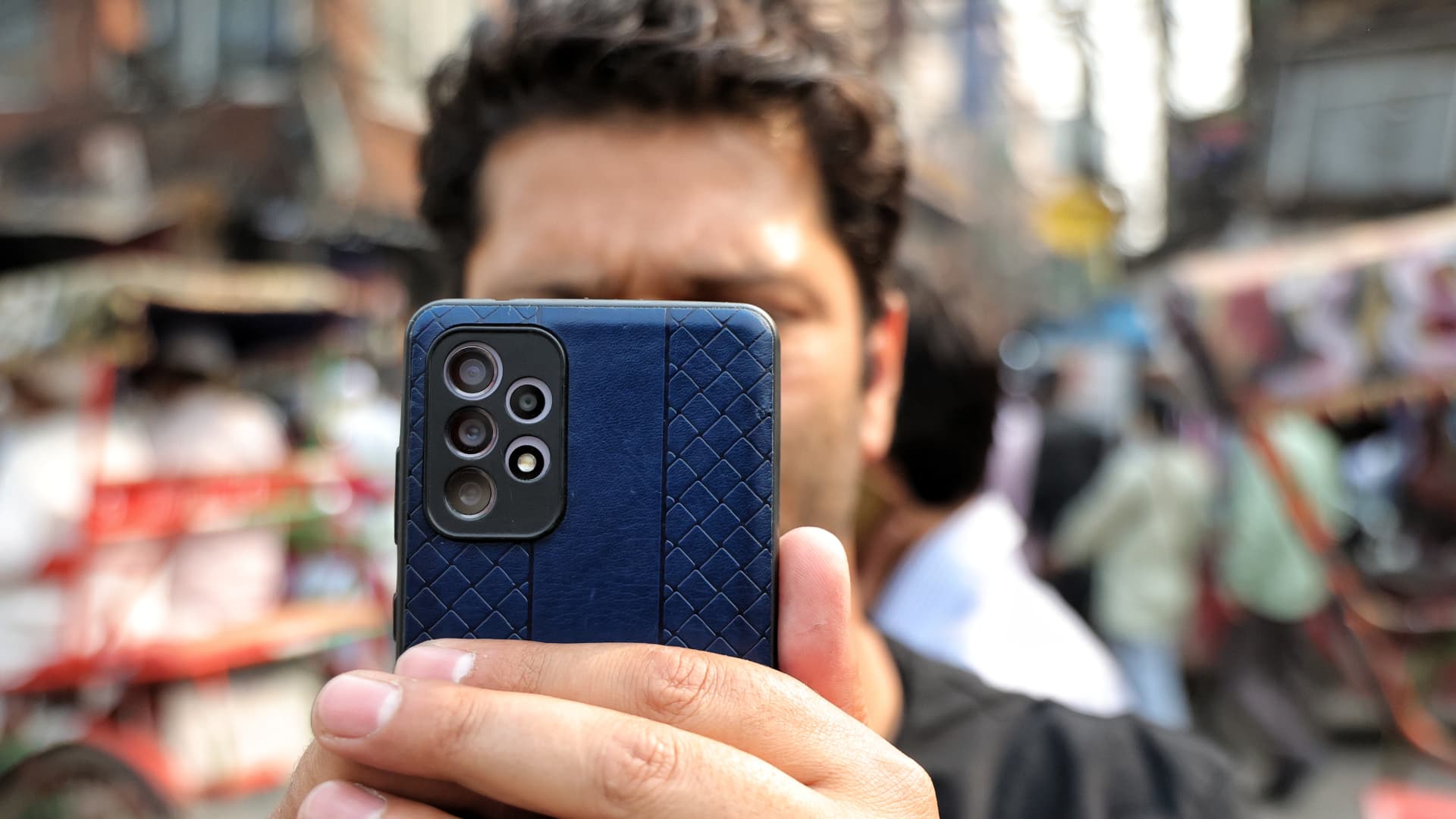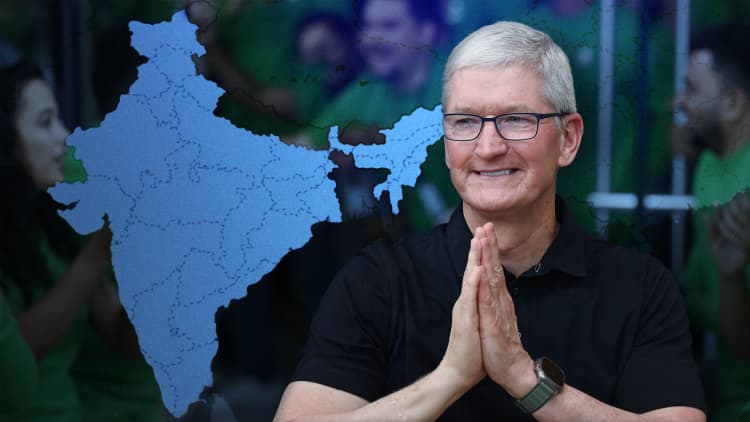

A man takes a photo with a Samsung phone with multiple cameras in Old Delhi, India on Oct. 28, 2022.
Nasir Kachroo | NurPhoto | Getty Images
India’s smartphone market stabilized in the second quarter with 36.1 million units shipped, according to a report by Canalys.
That figure represents a 1% dip from a year ago, far better than the 20% drop in the first quarter. Shipments also declined by 27% and 6% in the fourth and third quarter of 2022, respectively.
“With a troubled few quarters behind us, the market has finally gained momentum heading into the second half,” said Sanyam Chaurasia, analyst at Canalys. “During Q2, there was a slight improvement in macro indicators, with increased manufacturing output and reduced inflation rates.”
Compared with the previous quarter, the market grew 18% as inventory levels improved, which Canalys attributed to a better business environment.
“Smartphone vendors are acclimatizing to the dynamic business environment, focusing on ensuring long-term sustainability,” said Chaurasia.
Samsung continued to dominate in the second quarter, claiming about 18% market share with 6.6 million shipments, according to Canalys. Vivo followed closely shipping 6.4 million phones, while Xiaomi ranked third with 5.4 million shipments.
India is already the world’s second-largest smartphone market and is likely to add 300 million new internet users, Varun Mishra, senior analyst at Counterpoint Research, previously told CNBC.
Chaurasia said he expects companies to promote their affordable 5G portfolios during the Cricket World Cup in India in October.
He noted risks such as uncertainty tied to the monsoon season could dampen demand. Chaurasia said, however, that the government wants to boost demand ahead of national elections next year.
Physical sales still matter
Canalys noted that consumers in India tend to prefer buying phones offline, and that has shaped retail strategies in the country.
In April, Apple opened two retail stores in Delhi and Mumbai. Samsung announced in the same month that it will set up 15 premium experience stores across India by the end of the year in major cities like Delhi, Mumbai and Chennai.

“Offline consumer demand, both in rural and urban areas, has surged due to a strong retail consumer preference,” Chaurasia said.
“On the other hand, online demand has been inconsistent and primarily driven by urban consumers during e-commerce sales periods,” he said, adding that vendors are striving for a better balance between offline and online sales.








